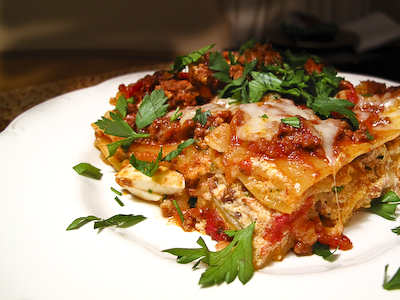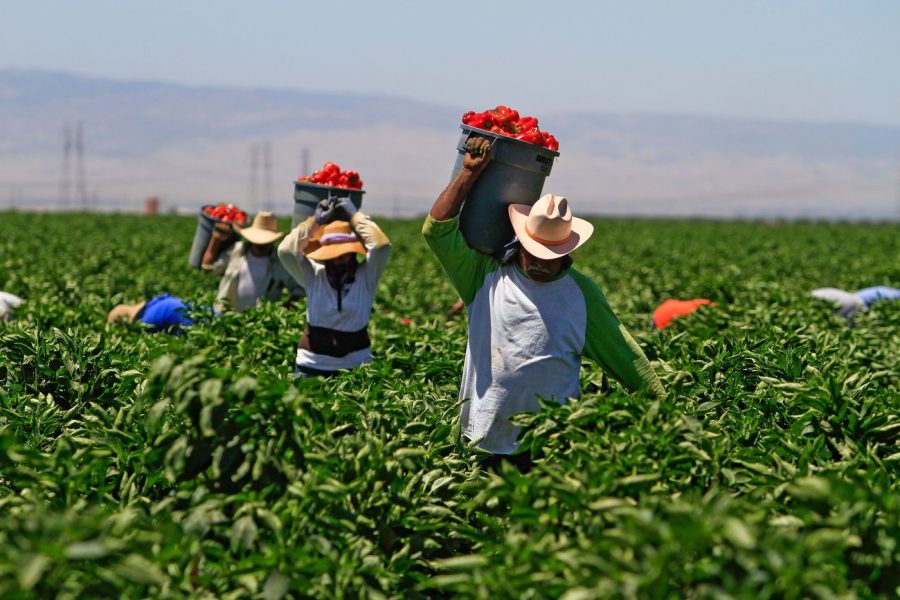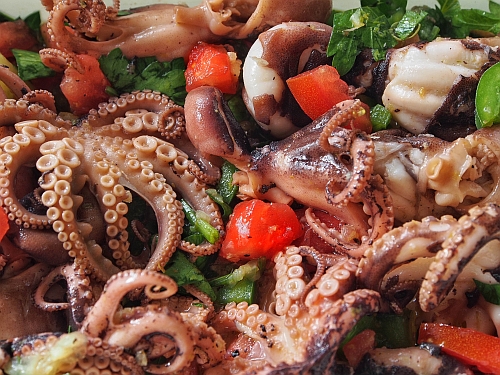
A big dish of lasagne* always marked major holidays at the LaBella house; we could count on it at Thanksgiving, Christmas, and Easter. When I got older, I would prevail upon my maternal grandmother, Carmelina, to make lasagne for my birthday in June—shortening the wait between Easter and Thanksgiving. Noonie, as I called her, always obliged.
Labor-intensive as lasagne is to prepare, it was never the main course on any of our holiday menus. It was, after all, just a “dish of pasta with red sauce,” and thus—in the opinion of the average Italian-American grandmother—appropriate as a first course before the Braccioletone, the ham, or the turkey. Nonetheless, we did acknowledge it as the pièce de résistance; whenever Noonie brought forth the lasagne, the conversation became more animated, the mood brighter, the meal more festive.
The lasagne course invariably included green salad, bread, and perhaps a dish of hot peppers. Indeed, I’ve often wondered why Noonie and Pop (my grandfather) ever bothered with the ham or turkey. I can only guess that it was their way of paying homage to America, the place where Italians and other poor immigrants could afford food in such abundance. Paradoxically, it was at tables like ours (in Middletown, Connecticut) where gastronomy inspired by the Old Country could be celebrated in a way that had never been possible in the Sicilian and Calabrian villages my great-grandparents and their neighbors had been forced to leave behind.
* Lasagne is the correct spelling of this classic casserole and the plural of lasagna—a wide, flat noodle.
Ingredients (see end notes):
Olive oil
2 Cloves of garlic, peeled, and finely sliced
1 Medium yellow onion, peeled, and diced
1 Lb. Sweet or hot Italian sausage, removed from its casings
1 ½ Lb. Ground beef (20% fat)
1 6 oz. Can tomato paste
12 oz. Dry red wine
2 28 oz. Cans Italian plum tomatoes, crushed (preferably San Marzano)
2 Tbs. Fresh oregano, chopped or 1 Tbs. dried oregano if you cannot find it fresh
4 Tbs. Fresh basil, finely chopped
1 Lb. Whole- milk ricotta
4 Tbs. coarsely chopped Italian flat-leaf parsley
1 Large egg
1/4 tsp. Nutmeg, freshly grated
1 Cup Parmesan, freshly grated
1/2 Lb. Fresh whole-milk mozzarella, shredded
6 Eggs, hard-boiled, peeled, and thinly sliced
Salt & freshly-ground black pepper to taste (see end notes)
8-10 oz Lasagne
Additional Italian flat-leaf parsley for garnish
Preparation:
For the Sauce:
Heat a heavy-bottomed pot (at least 4 quarts) over medium-high heat, then add enough olive oil to cover the bottom. Add the garlic and sauté, shaking the pan for about one minute; then add the diced onions. Lower the heat to medium and sauté the onions for 3-4 minutes until they wilt and become translucent.
Add the sausage meat, and sauté, breaking up chunks with a wooden spoon or the back of a fork as they go in. Add the ground beef, breaking it up as well. Cook for about 5 minutes, or until the meats lose their color and begin to brown.
While the meats are cooking, put the tomato paste into a bowl, rinse out the can with wine and add it to the bowl. Stir gently with a fork to dissolve the tomato paste, then add an additional can of wine (This is how my grandmother measured, but it comes to 12 oz., a cup and a half.) Stir the mixture into the meats, raise the heat to high and boil for a minute or two, evaporating the alcohol.
Lower the heat to medium, add the canned tomatoes and bring the pot to a simmer. Adjust the heat so the sauce bubbles gently. Add the oregano and half the basil; partially cover the pan so that the sauce gives up some of its liquid. Simmer gently for about one and one half hours, stirring occasionally.
For the filling:
Beat the egg in a bowl, then stir in the ricotta. Stir in the Parmesan, the remaining basil, parsley, and nutmeg. Set the mixture aside.
Assembly:
Preheat the oven to 350 F.
Using an oven-proof casserole approximately 9 x 13 inches with 2-inch sides, ladle a cup of sauce over the bottom and spread evenly. Place three or four sheets of lasagne over the sauce, then follow with a ladle or two of sauce. Now gently spread approximately 1 to 1 1/2 cups of the ricotta mixture over the meat sauce layer. Atop the ricotta, place 10 slices of hard-boiled egg (roughly defining each portion). Follow with a sprinkling of Parmesan and a sprinkling of mozzarella.
Repeat this sequence: pasta, sauce, ricotta, egg + the grated cheeses until you’ve filled the pan within 3/4 inch of the top. Add a final layer of pasta and top with a thin layer of sauce.
We recommend that the pan be sealed with aluminum foil and baked, in the middle of the oven, for at least 50 minutes. Then, test the texture of the cooked pasta (as you would a cake) with a straw or knife blade. When it’s cooked to your satisfaction, sprinkle on the last layer of mozzarella and place the uncovered pan back in the oven. TIP: Placing a baking sheet on the rack below the uncovered pan will catch any drips.
Bake just long enough to melt the cheese and/or brown the top of the lasagne. Remove from the oven and let it sit at least 10 minutes before serving. Garnish each portion with parsley.
Lasagne is also delectable at room temperature.
Serves 10 as the pasta course in a feast or 6-8 as a substantial main dish.
About the Ingredients:
The time involved in making lasagne demands that you use first-rate ingredients. If you are not growing your own herbs, it’s worth buying fresh basil, Italian parsley, and oregano, rather than substituting dried herbs. If you use low-fat or fat-free cheeses or ultra-lean meat, you will diminish the rich flavors of the dish. Fats and oils are what hold and mellow the aromatic components of the herbs, spices, and garlic. Remember, this is celebratory food, part of a much larger spread. Each serving should be small and slowly savored. Furthermore, in Italy, lasagne was—and still is—a treat enjoyed only a few times each year.
We’ve included salt & freshly ground black pepper in the ingredient list, but we find that with the sausage, cheeses and canned tomatoes, the dish is amply seasoned.




